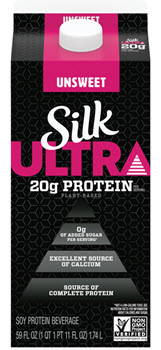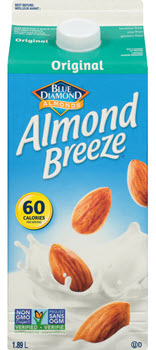The Making of a Plant-Based Beverage
Processing | APPLIED SCIENCE
Drinks based on cereal, legumes, nuts, or seeds are set to continue making inroads into the beverage category, with a projected 10%–15% compound annual growth rate in sales through 2026, according to Grand View Research. Although soy protein–based beverages are currently tops in the market, almond-based drinks are predicted to capture the largest market share by 2026.
Plant protein–based beverages, however, are some of the hardest beverages to formulate. Plant-based proteins can deliver bitterness, astringency, and sulfuric, metallic, and cardboard notes while lacking the bulk and richness associated with traditional dairy drinks. Beverage companies have developed multiple solutions to these challenges, including the use of polysaccharides such as gellan gum to suspend ingredients in the beverage and impart the desired mouthfeel of the beverage. Sweeteners, natural flavors, and masking agents are used to combat undesirable sensory notes and provide flavors desired by consumers.
Plant-based beverages are made by milling plant material into a homogenized product. The plant material ranges in size from 5 to 20 μm to match the characteristics of cow’s milk. Although different plant materials may require additional or varying processing steps, all follow the same general process. Let’s take a look at what it takes to manufacture a typical plant-based beverage such as soy or almond milk.
1) Soaking. As the first step in the process, soaking allows the nuts or grains to swell and soften, removes debris, and makes homogenization easier. With oat milk, for example, adding water to rolled oats at a 2.7:1 ratio makes an oat slurry. To prevent starch gelatinization when the oat slurry is heated, alpha amylase is added to break down the starch. Phytase also can be added to the oat beverage slurry to liberate inorganic phosphate from phytic acid to improve the nutrient profile of the beverage.
2) Blanching. Blanching inactivates enzymes and reduces microbial loads. Soy slurries, for instance, are blanched in boiling water to inactivate lipoxygenase, effectively inhibiting oxidation and off-flavor development. The largest challenge in making soy-based beverages is a beany flavor, so soy slurries commonly are heated under vacuum to remove these flavors.
3) Wet Milling. After blanching, wet milling grinds the plant material with additional water, usually through a hammer mill, to produce a homogeneous mix with the desired solids content.
4) Filtration. After milling, filtration removes insoluble solids and materials that lower the quality of the beverage, such as oligosaccharides and ripening enzymes. This produces a protein solution in water that is ready for homogenization and the addition of ingredients to make a high-quality beverage with an acceptable shelf life.
5) Homogenization. Homogenization of the plant protein-and-water base is commonly performed at this point at pressures as high as 3,500 psi.
6) Ingredient Addition. To provide desirable sensory properties and shelf life to plant-based beverages, processors add ingredients including sweeteners, gums, flavors, colors, and buffers. For example, Chobani makes an oat-based beverage labeled as “oatmilk” that contains an oat/water blend and 2% or less of canola oil, cane sugar, vanilla extract, natural flavor, sea salt, nutrient extract blend, calcium carbonate, gellan gum, tricalcium phosphate, and dipotassium phosphate. Gellan gum is the most important functional ingredient in the beverage, used to solubilize and/or suspend all of the ingredients so that the product is homogeneous and has desirable mouthfeel.
7) Homogenization. After the ingredients are mixed together, the beverage is commonly homogenized again.
8) Treatment. Ultra high temperature heating at 180°F or greater under aseptic conditions produces the longest shelf life, activates functional ingredients, and saturates the beverage. However, this heating step can destroy nutrients, produce off-flavors, and damage plant materials, so some processors are using alternatives like hydrostatic pressure to minimize heat treatment. Natural flavors such as MakeSense and NonSense from Imbibe also can help combat unwanted attributes by delivering added indulgence and a balanced flavor profile, according to Erin Costello, communications and events associate at Imbibe.
After the treatment, the product may be homogenized again.
9) Filling. The final step in the process is filling aseptic containers with the product, cooling the product, and storing it at 34°F. A retort can help extend the shelf life of plant-based beverages, including rice, oat, and coconut milks. Retorting is a valuable processing step that lengthens the shelf life of beverages with neutral pHs as well as ensuring product safety.
For some products, spray-drying and freeze-drying are used to dry protein beverages into a shelf-stable powder that consumers can reconstitute.
Continuing Growth
The plant-based beverage category is poised to keep increasing in volume and number of products. Continued growth is projected for almond, soy, oat, coconut, and rice beverages as well as other novel plant protein sources such as hemp, pea, and cashew, according to Grand View Research.
These products will need sweeteners, flavors, polysaccharides, and emulsifiers to keep all of the ingredients in solution and deliver the desired flavor, consistency, and mouthfeel to consumers.
As the knowledge base of ingredient technology and processing increases, the possibilities for expanding plant-based beverages will also continue to multiply.
Learning Objectives
1. Understand the ingredients that are essential to the production of plant-based beverages.
2. Learn the steps for making plant-based protein beverages.
3. Assess the opportunities for new plant-based beverages.






